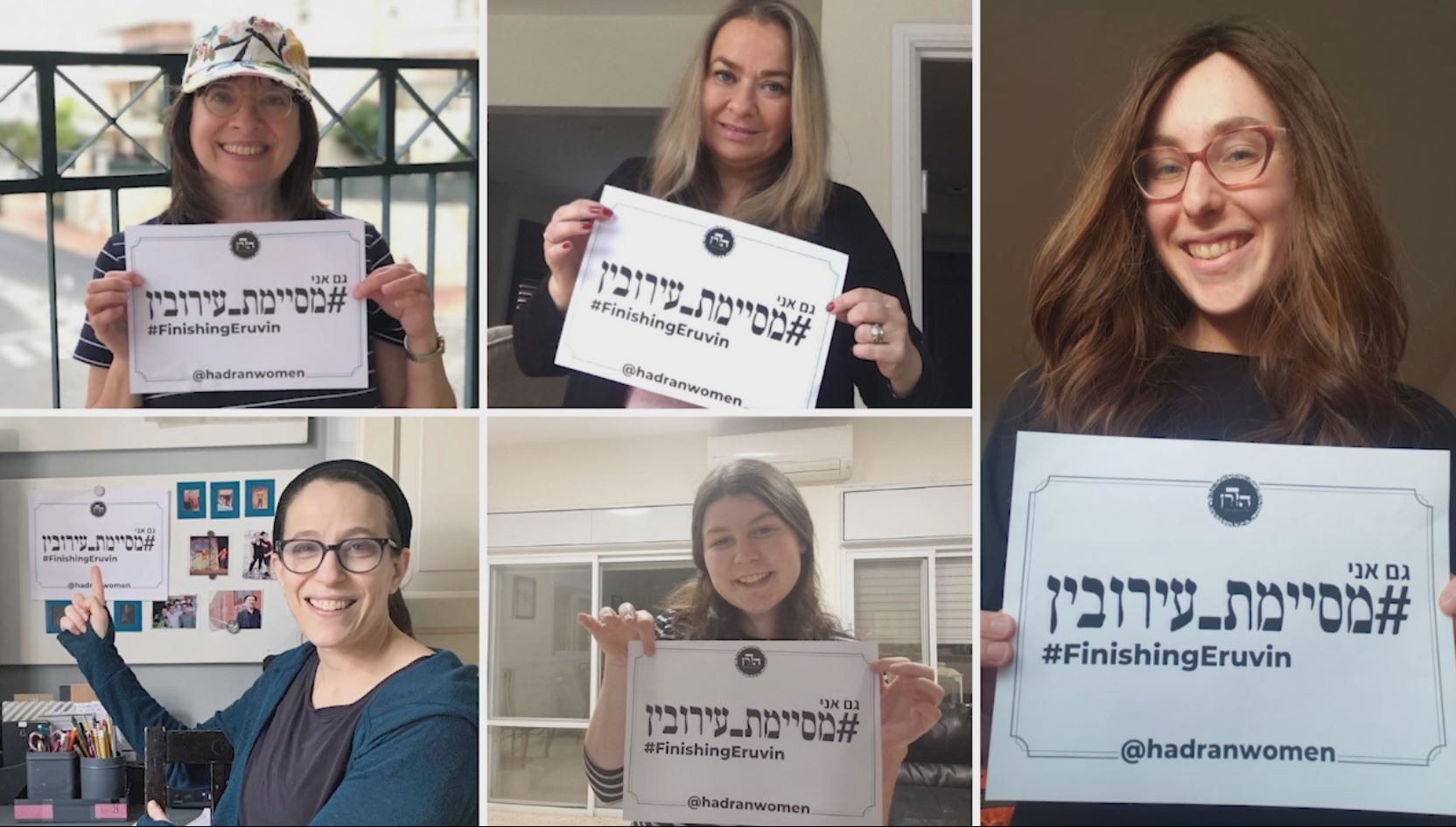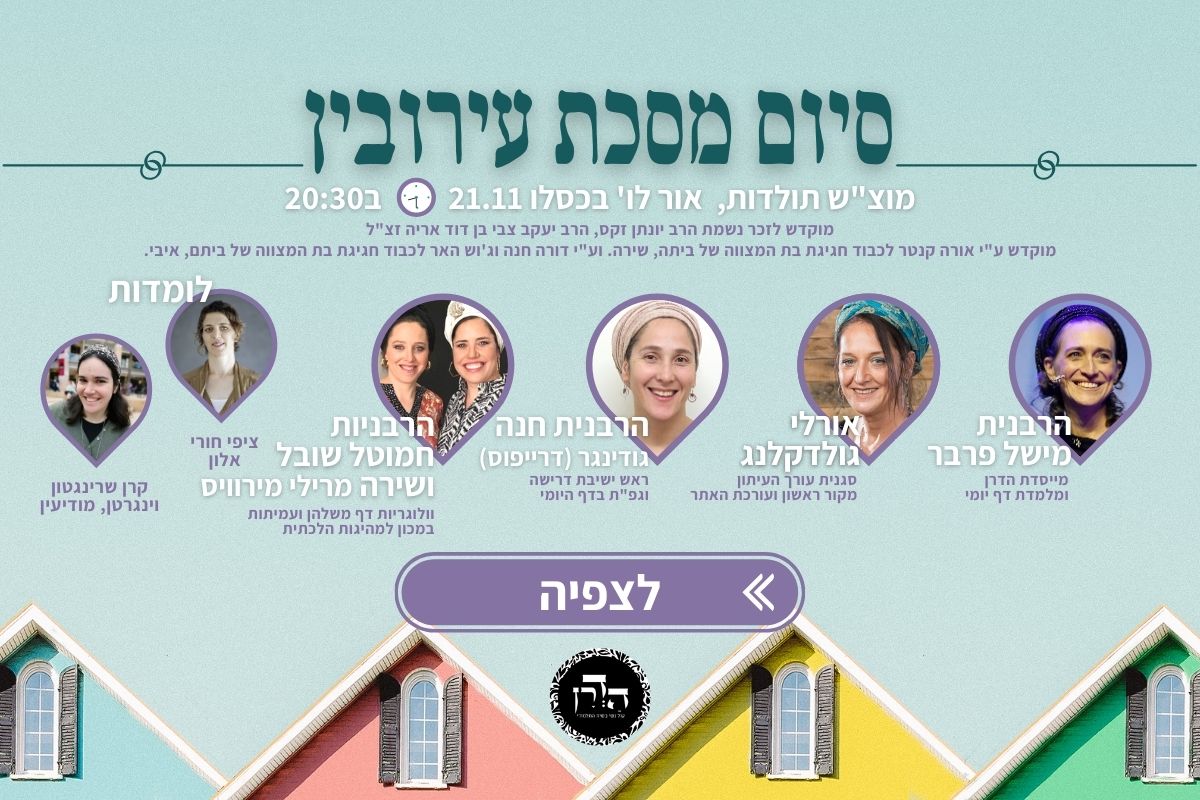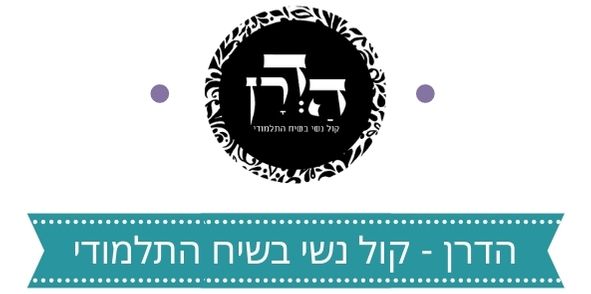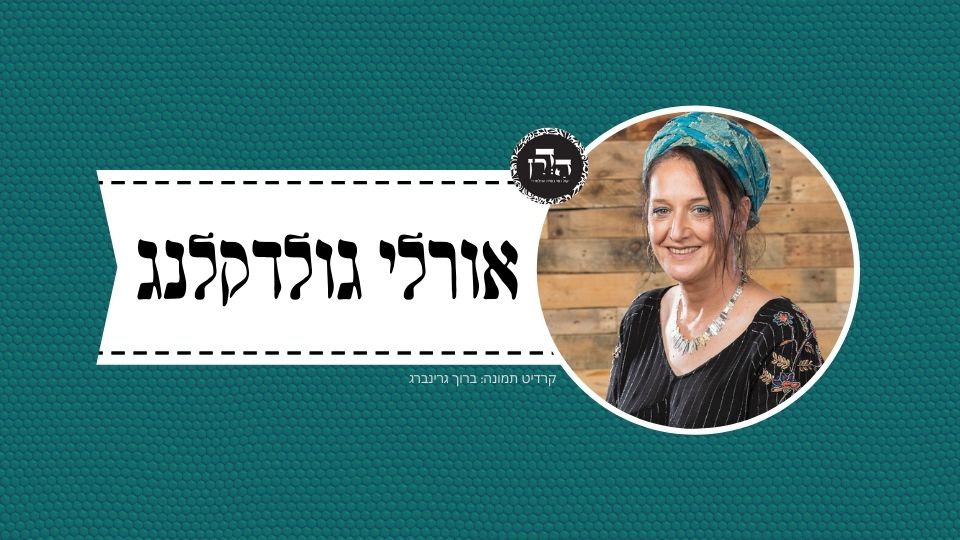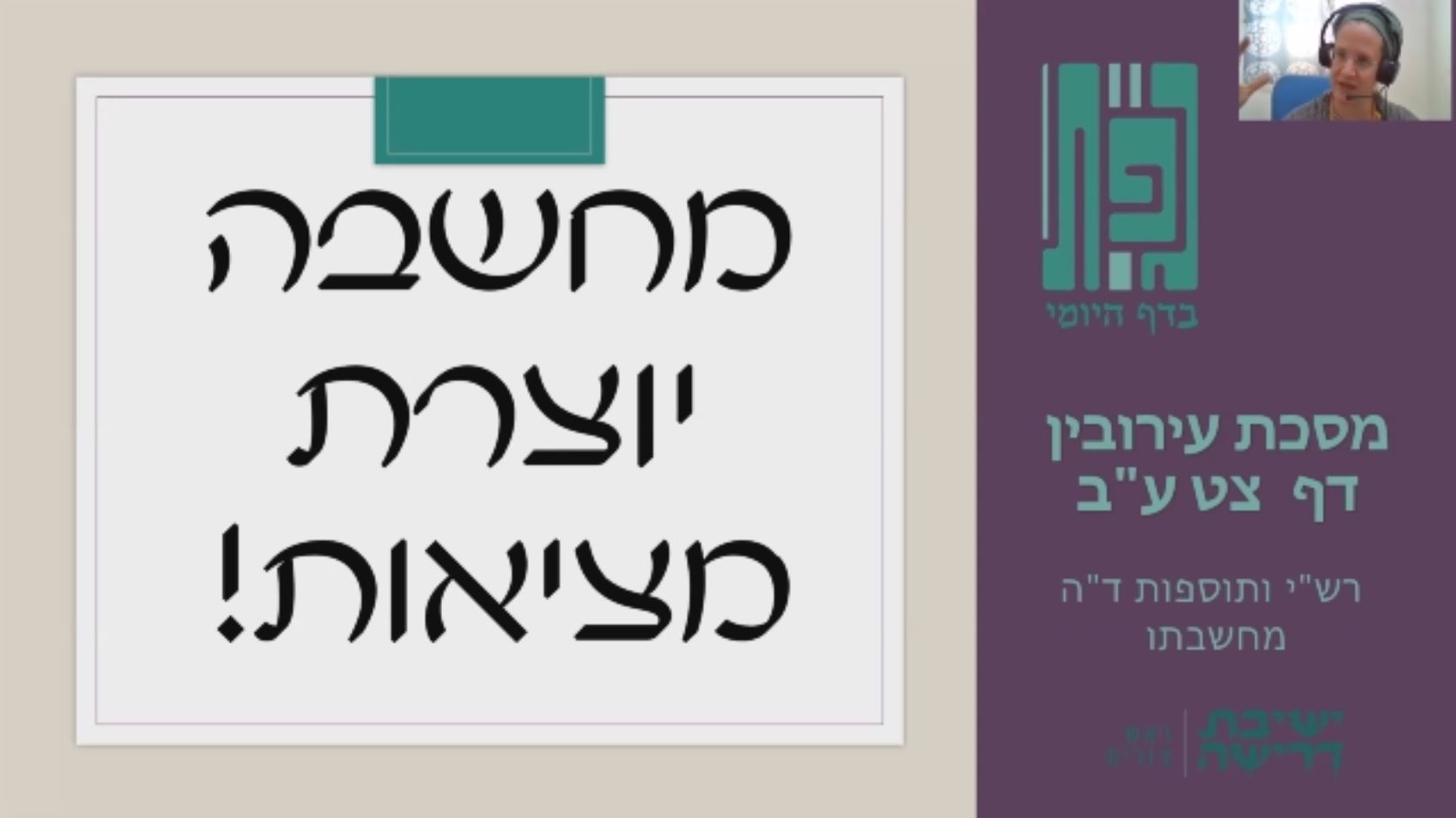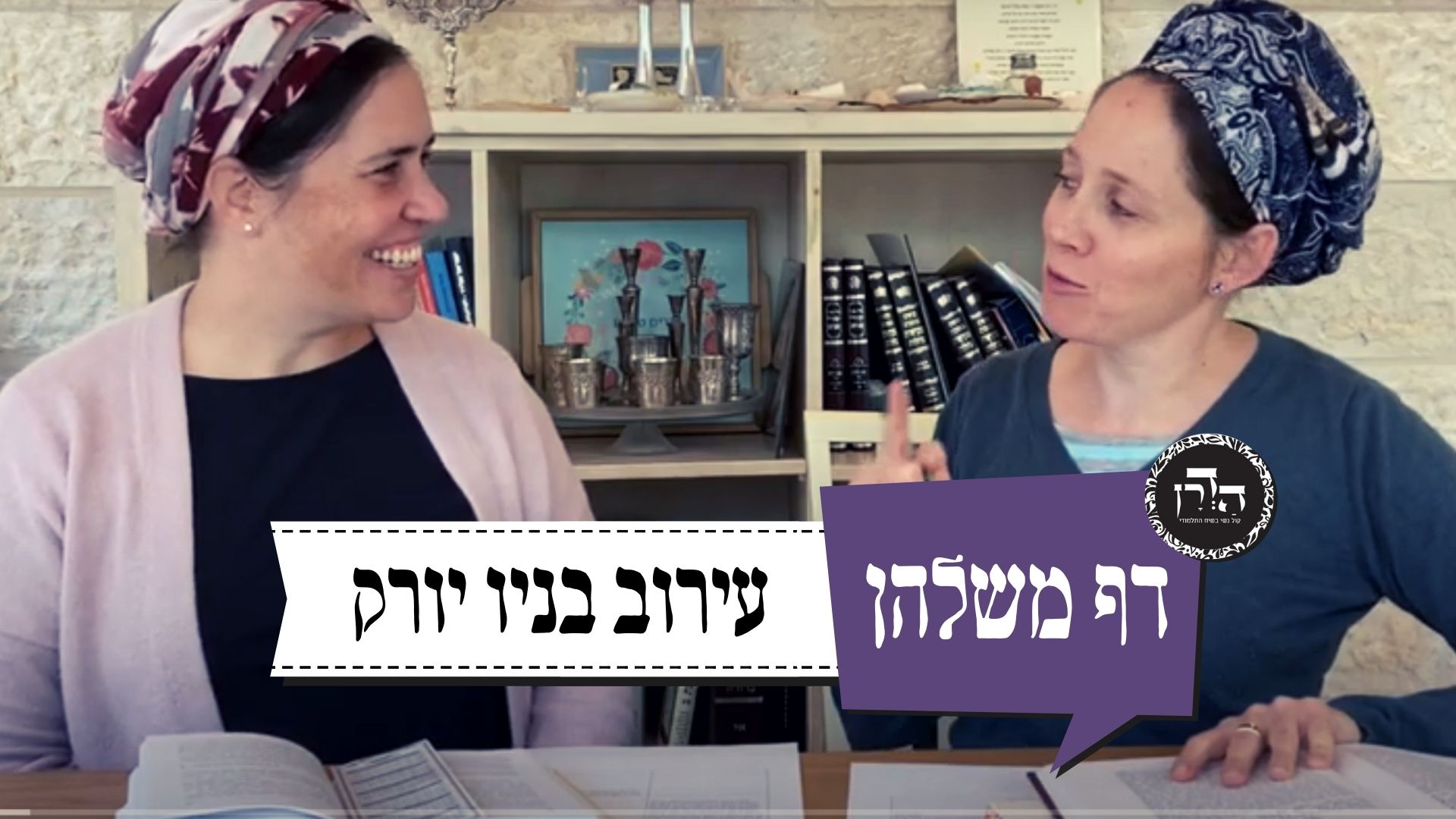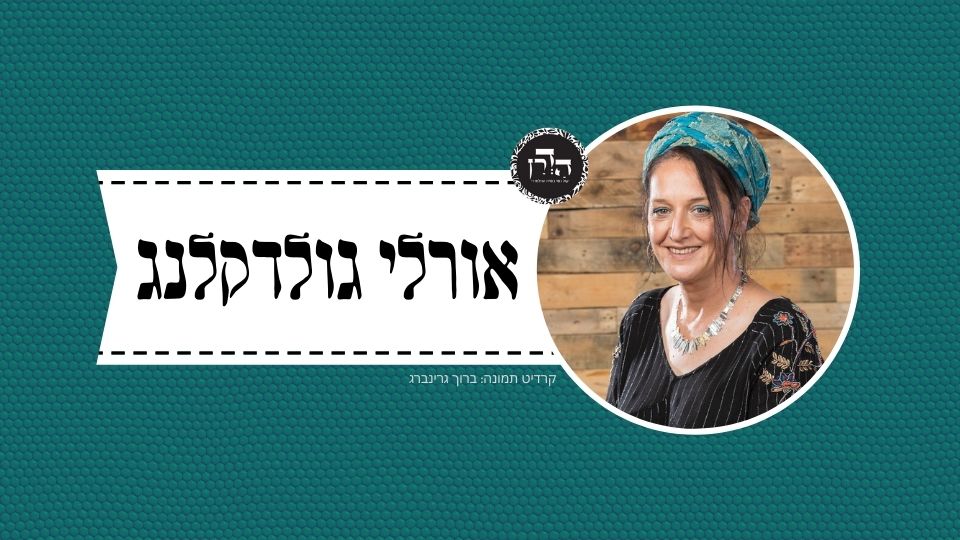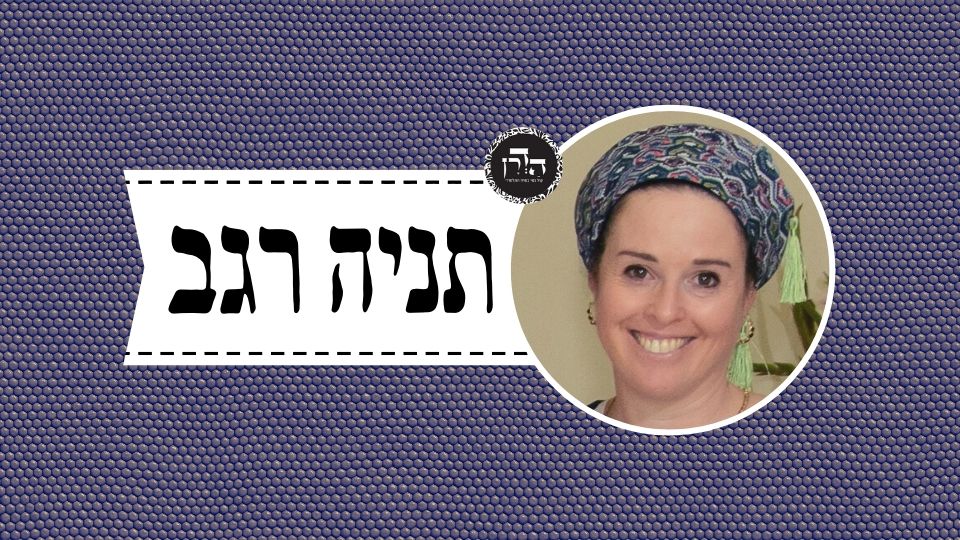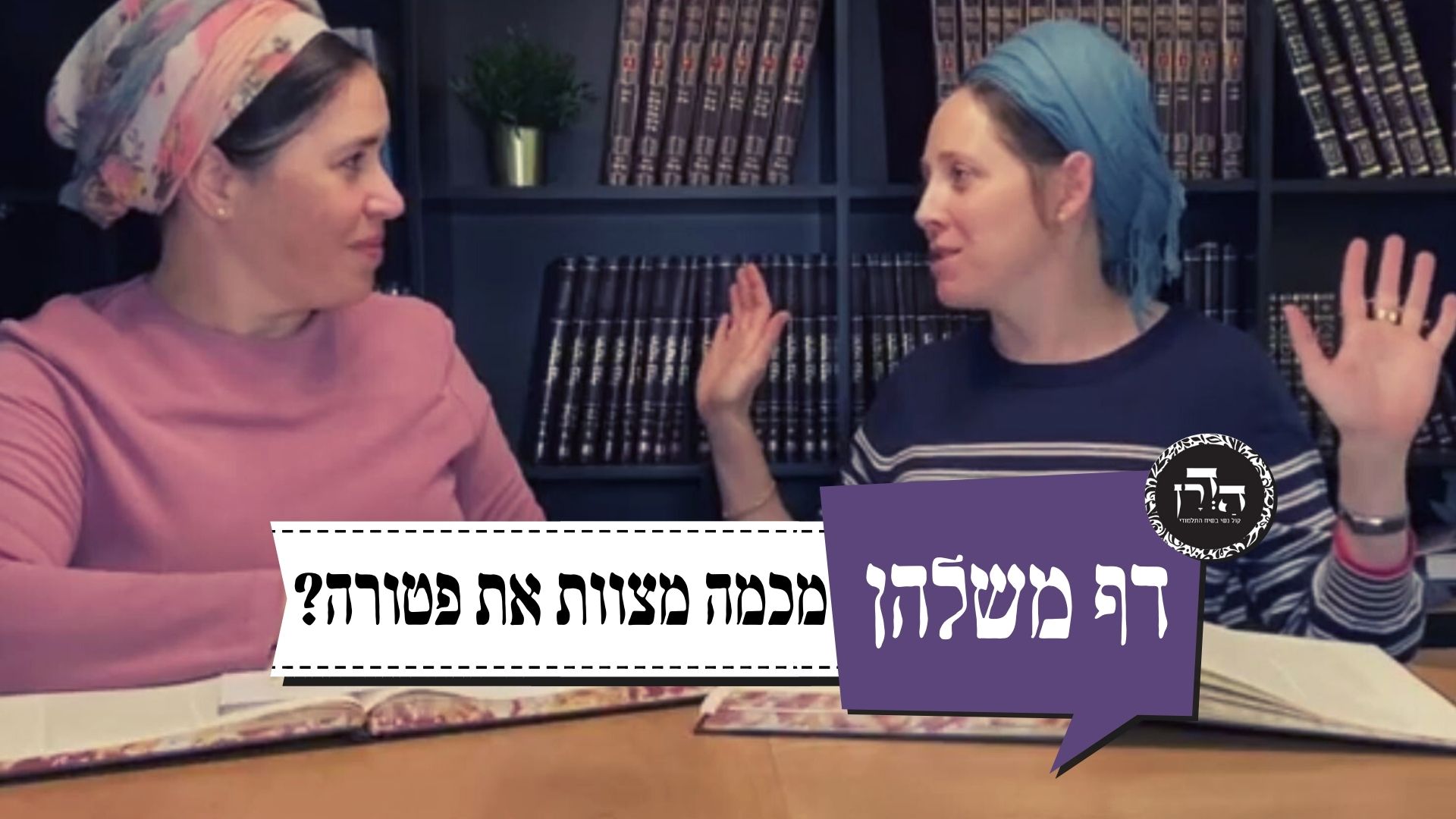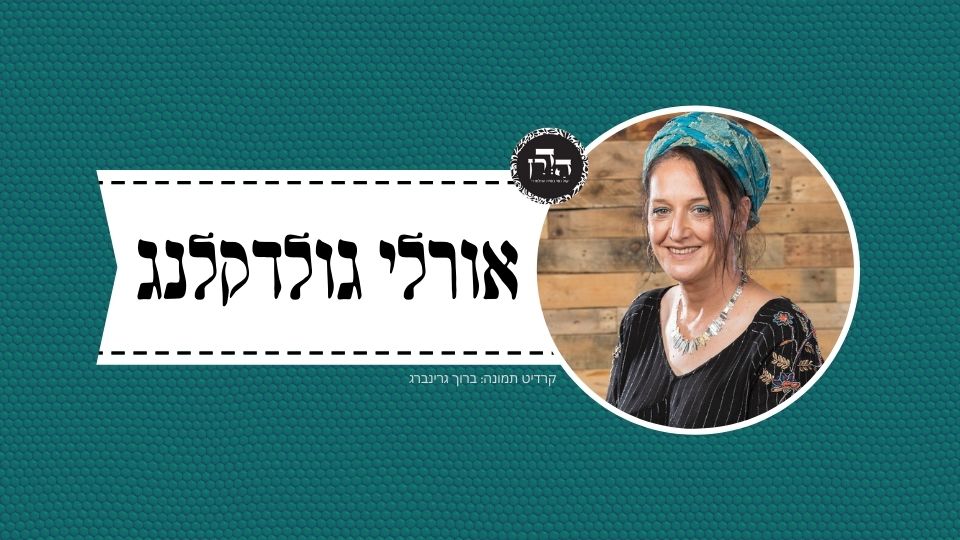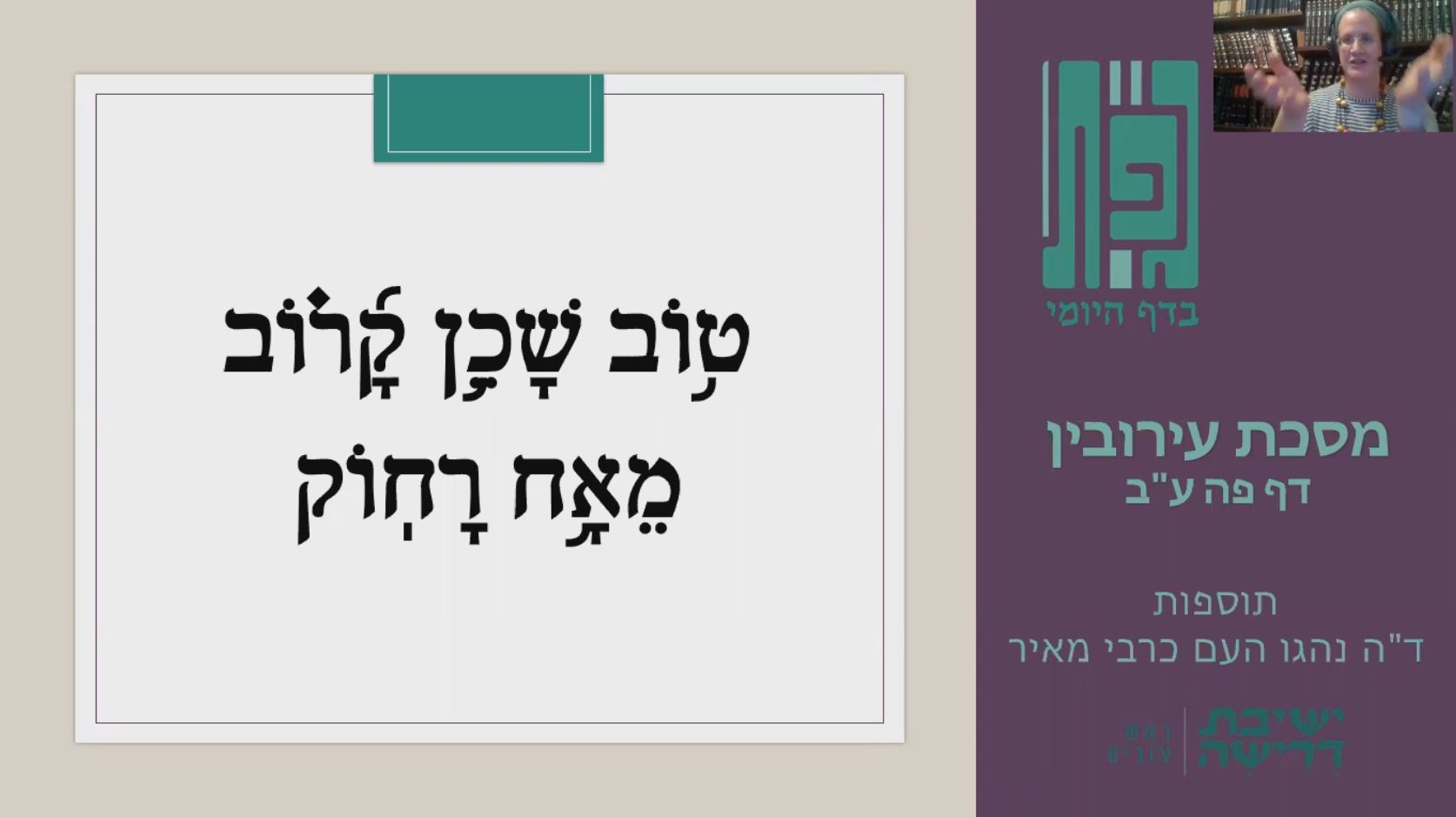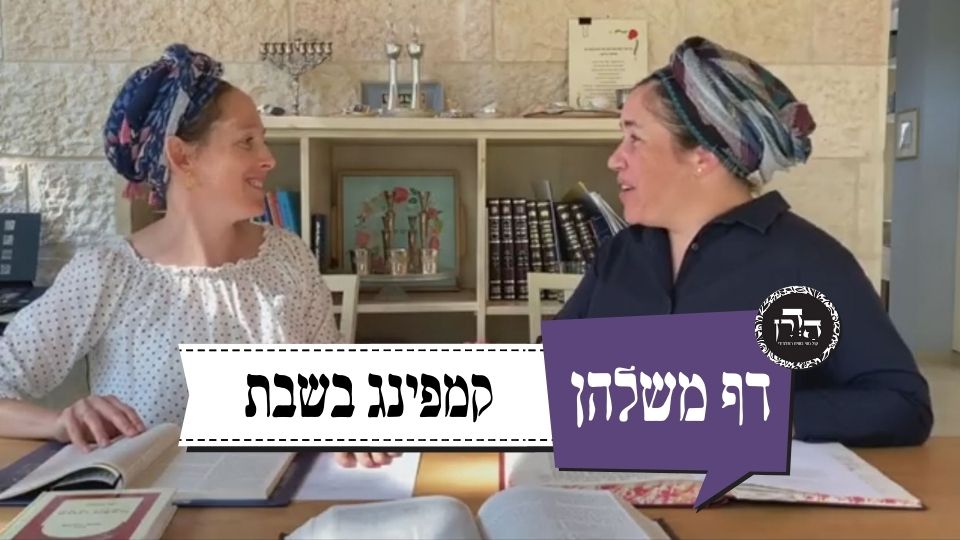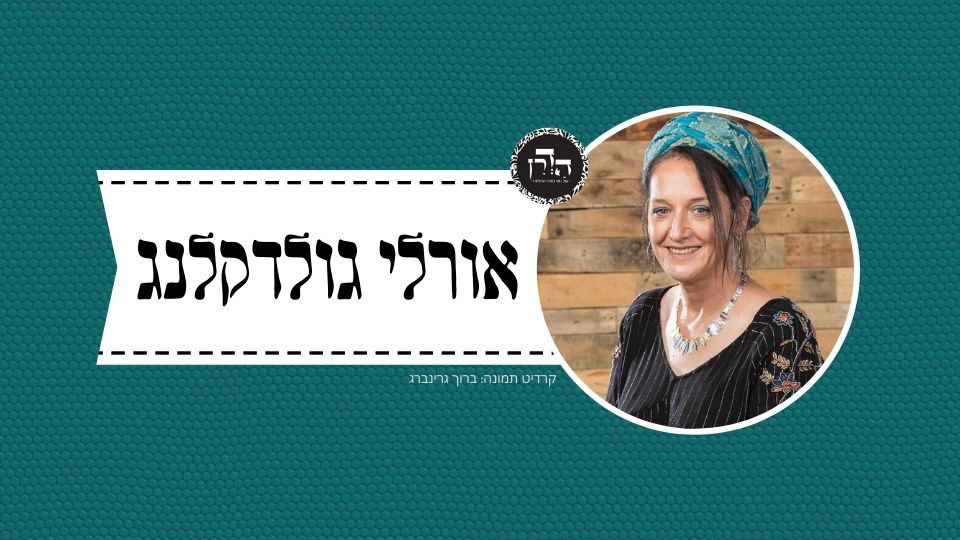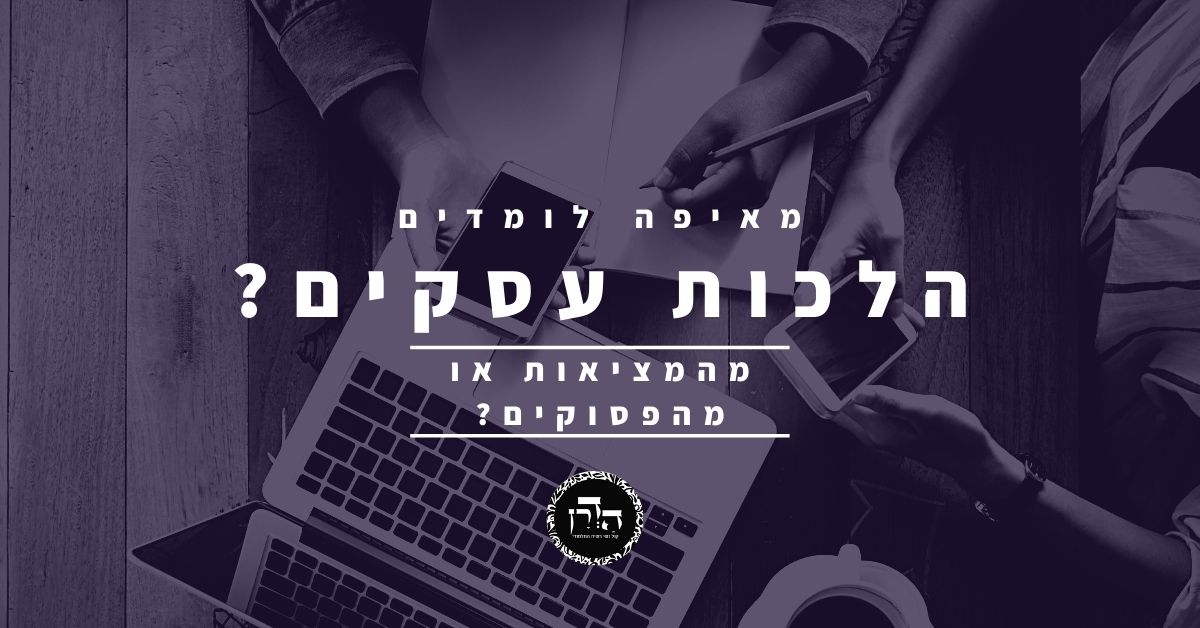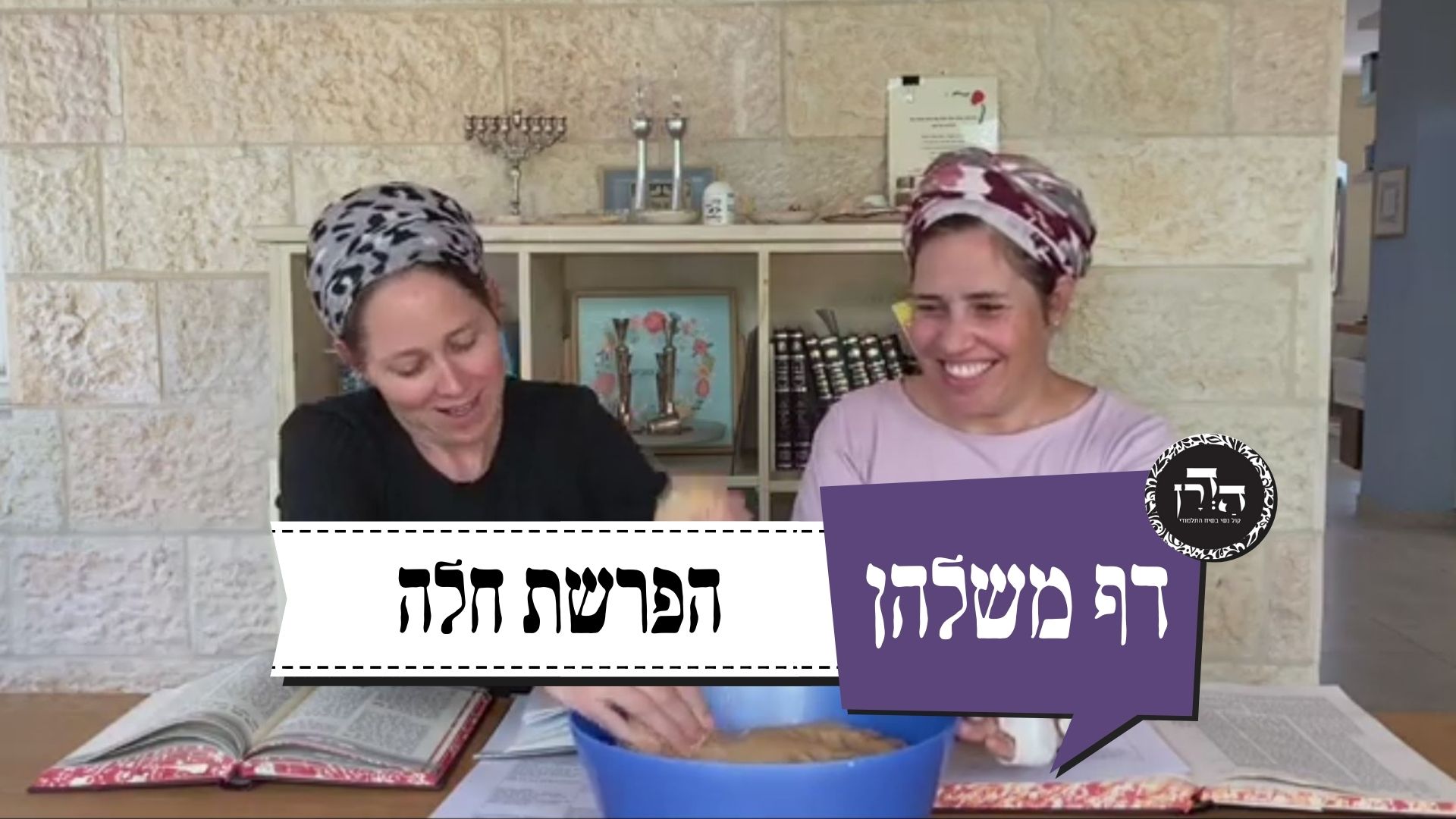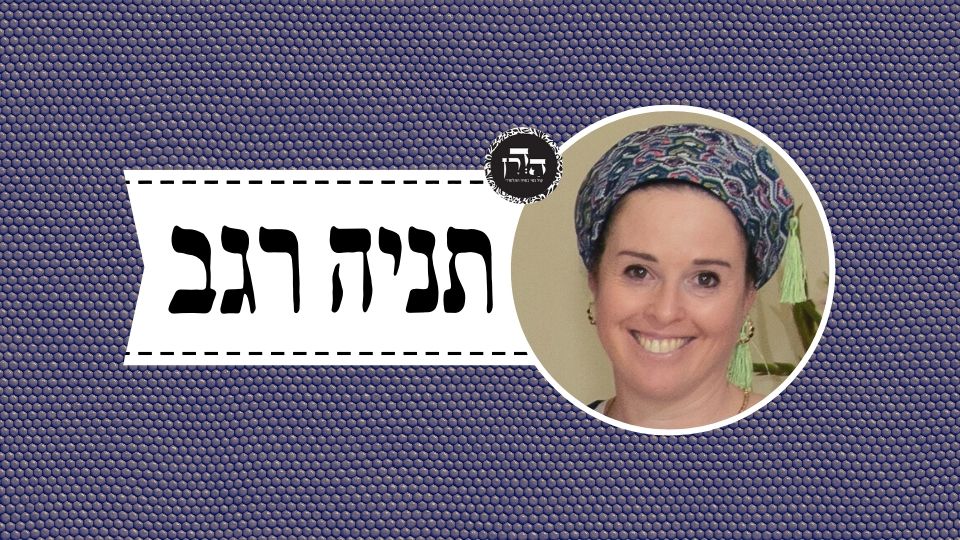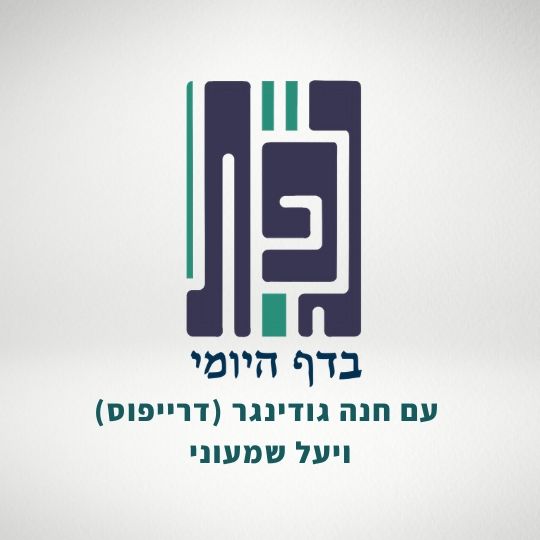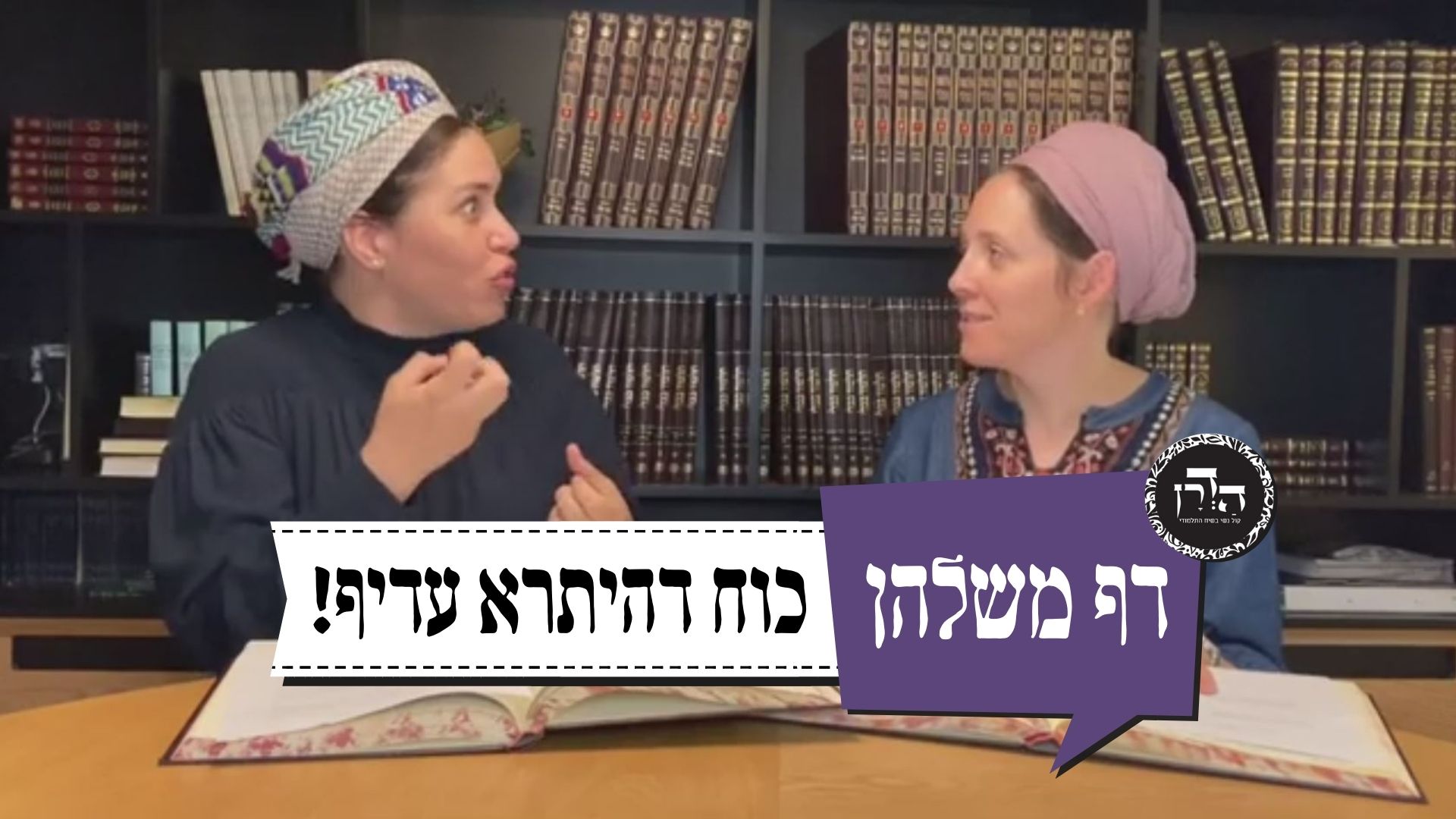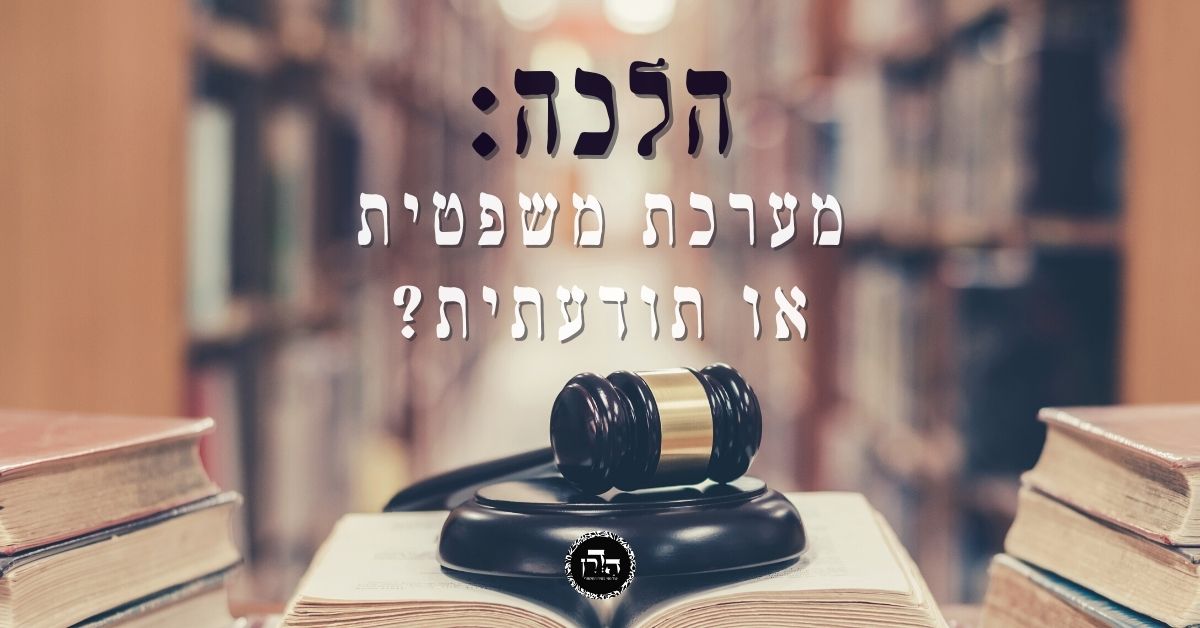עירובין קג
אִי אַלִּיבָּא דְּרַבִּי אֱלִיעֶזֶר קָאָמַר, אֲפִילּוּ לְכַתְּחִילָּה נָמֵי.
If he stated his ruling in accordance with the opinion of Rabbi Eliezer, why did he permit tying a bow only after the fact? It should also be permitted even ab initio, as Rabbi Eliezer maintains that preparations required for the performance of a mitzva override the prohibitions of Shabbat.
אֶלָּא, לָא קַשְׁיָא: הָא — רַבִּי שִׁמְעוֹן, הָא — רַבָּנַן, דְּתַנְיָא: בֶּן לֵוִי שֶׁנִּפְסְקָה לוֹ נִימָא בְּכִנּוֹר — קוֹשְׁרָהּ, רַבִּי שִׁמְעוֹן אוֹמֵר: עוֹנְבָהּ.
Rather, the Gemara rejects the previous explanation: It is not difficult; this baraita that deems tying prohibited is according to the opinion of Rabbi Shimon, while that mishna that rules that tying is permitted, is according to the opinion of the Rabbis. As it was taught in a baraita: If a string of the Levite’s harp was severed on Shabbat, he may tie it with a knot; Rabbi Shimon says: He may only form a bow. The Rabbis permit the preparations for a mitzva that could not have been performed before Shabbat, whereas Rabbi Shimon is stringent and prohibits even those preparations.
רַבִּי שִׁמְעוֹן בֶּן אֶלְעָזָר אוֹמֵר: אַף הִיא אֵינָהּ מַשְׁמַעַת אֶת הַקּוֹל. אֶלָּא מְשַׁלְשֵׁל מִלְּמַטָּה וְכוֹרֵךְ מִלְּמַעְלָה, אוֹ מְשַׁלְשֵׁל מִלְּמַעְלָה וְכוֹרֵךְ מִלְּמַטָּה.
The Gemara continues its citation of the baraita. Rabbi Shimon ben Elazar says: Even if he ties a knot or a bow, the harp will not issue the proper sound, and he would therefore be committing a transgression without performing the mitzva in a fitting manner. Rather, he unwinds the string from the lower knob and winds it around the upper one, or he unwinds the string from the upper knob and winds it around the lower one, before tightening the string until it produces the proper note.
וְאִיבָּעֵית אֵימָא: הָא וְהָא רַבָּנַן, וְלָא קַשְׁיָא: כָּאן בָּאֶמְצַע, כָּאן מִן הַצַּד.
And if you wish, say instead that both sources were taught in accordance with the opinion of the Rabbis, who permit preparations for a mitzva that could not have been performed the day before, and even so it is not difficult; here, the mishna permits tying in a case where the string was severed in the middle, in which case the sound would be affected if the string were reconnected with a bow, whereas there, the baraita is referring to a string that was severed on the side near the end of the string, which can be fixed with a bow.
וְאִיבָּעֵית אֵימָא: הָא וְהָא בָּאֶמְצַע, מָר סָבַר: גָּזְרִינַן, וּמָר סָבַר: לָא גָּזְרִינַן.
And if you wish, say instead that both sources are referring to a case where the string snapped in the middle, and the issue at hand is subject to a dispute between Rabbi Shimon and the Rabbis: One Sage, Rabbi Shimon, maintains in the baraita that it is prohibited even to tie a knot in the middle, as a decree, lest one unnecessarily tie a knot on the side as well. And the other Sage, the Rabbis, maintains in the mishna that we do not issue a decree of this kind.
מַתְנִי׳ חוֹתְכִין יַבֶּלֶת בַּמִּקְדָּשׁ, אֲבָל לֹא בִּמְדִינָה. וְאִם בִּכְלִי — כָּאן וְכָאן אָסוּר.
MISHNA: A wart is an example of a blemish that temporarily disqualifies a priest from performing the Temple service, and disqualifies an animal from being offered on the altar; they regain their fitness once the wart is removed. Consequently, on Shabbat one may cut off a wart by hand in the Temple, as this constitutes a preparatory act required for the sacrificial service. However, he may not cut off a wart in the rest of the country. And if he seeks to cut off the wart with an instrument, it is prohibited in both places.
גְּמָ׳ וּרְמִינְהוּ: הֶרְכֵּיבוֹ, וַהֲבָאָתוֹ מִחוּץ לַתְּחוּם, וַחֲתִיכַת יַבַּלְתּוֹ — אֵין דּוֹחִין, רַבִּי אֱלִיעֶזֶר אוֹמֵר: דּוֹחִין!
GEMARA: And the Gemara raises a contradiction from another mishna: When Passover eve occurs on Shabbat, the acts of carrying a Paschal lamb on one’s shoulders, bringing it to the Temple from outside the Shabbat boundary, and cutting off its wart to render it fit for the altar, do not override the prohibitions of Shabbat. Rabbi Eliezer, conforming to his standard opinion, says: They override the Shabbat prohibitions. The mishna in Eiruvin apparently contradicts the opinion of these Sages.
רַבִּי אֶלְעָזָר וְרַבִּי יוֹסֵי (בֶּן) חֲנִינָא, חַד אָמַר: הָא וְהָא בְּלַחָה, וְלָא קַשְׁיָא: כָּאן — בַּיָּד, כָּאן — בִּכְלִי.
Rabbi Elazar and Rabbi Yosei ben Ḥanina suggested different resolutions to this difficulty: One said that both sources are referring to a moist wart, and it is not difficult. Here, the mishna permits removing the wart by hand. It is prohibited by rabbinic decree, as that is not the usual manner of performing the procedure. Whereas there, the mishna prohibits removal of the wart with an instrument by Torah law.
וְחַד אָמַר: הָא וְהָא בַּיָּד, וְלָא קַשְׁיָא: הָא — בְּלַחָה, הָא — בִּיבֵישָׁה.
And the other one said that in both cases the wart is removed by hand, and it is not difficult. There, the mishna prohibits the removal of a moist wart, whereas here, the mishna is referring to a dry wart, the removal of which does not constitute a prohibited labor.
וּלְמַאן דְּאָמַר ״הָא בַּיָּד הָא בִּכְלִי״, מַאי טַעְמָא לָא אָמַר ״הָא בְּלַחָה הָא בִּיבֵישָׁה״? אָמַר לָךְ: יְבֵישָׁה — אֲפִילּוּ בִּכְלִי נָמֵי שְׁרֵי, מַאי טַעְמָא? אִיפָּרוֹכֵי אִיפָּרְכָא.
The Gemara raises a difficulty: And according to the one who said: This is referring to removal by hand, and that is referring to removal with an instrument; what is the reason that he did not say, as did his colleague: This is referring to a moist wart and that is referring to a dry one? The Gemara answers: He can say to you that with regard to a dry wart, it is permitted to remove it even with an instrument. What is the reason? As it crumbles on its own, cutting it is like cutting off dead skin.
וּלְמַאן דְּאָמַר ״הָא בְּלַחָה וְהָא בִּיבֵישָׁה״, מַאי טַעְמָא לָא אָמַר ״הָא בַּיָּד הָא בִּכְלִי״? אָמַר לָךְ: בִּכְלִי — הָא תְּנַן: אִם בִּכְלִי — כָּאן וְכָאן אָסוּר.
And according to the one who said: This is referring to a moist wart and that is referring to a dry one, what is the reason that he did not say, like the other Sage: This is referring to removal by hand and that is referring to removal with an instrument? The Gemara answers: He can say to you that with regard to an instrument, we explicitly learned in the mishna: If he wishes to cut off the wart with an instrument, it is prohibited in both places. Consequently, it is unnecessary to teach again that it is prohibited to remove a wart with an instrument.
וְאִידָּךְ — הָא דְּקָתָנֵי הָתָם, מִשּׁוּם דְּקָא בָּעֵי אִיפְּלוֹגֵי רַבִּי אֱלִיעֶזֶר וְרַבָּנַן.
And the other Sage, how does he respond to this contention? He can say that the other mishna teaches this halakha there because it wants to record the dispute between Rabbi Eliezer and the Rabbis on this issue, i.e., to inform us that Rabbi Eliezer disagrees and permits cutting off the wart even with an instrument.
וְאִידָּךְ — דּוּמְיָא דְּהֶרְכֵּיבוֹ וַהֲבָאָתוֹ מִחוּץ לַתְּחוּם קָתָנֵי, דְּרַבָּנַן.
And the other Sage, how does he counter this reasoning? He can say that the tanna teaches the case of the wart parallel to the cases of carrying the animal and bringing it to the Temple from outside the Shabbat boundary, activities that are prohibited by rabbinic law. Consequently, the ruling involving a wart is also referring to cutting that is prohibited by rabbinic law, i.e., cutting by hand, not with an instrument.
וְאִידָּךְ: הֶרְכֵּיבוֹ דְּלָא כְּרַבִּי נָתָן, דְּאָמַר: הַחַי נוֹשֵׂא אֶת עַצְמוֹ. הֲבָאָתוֹ מִחוּץ לַתְּחוּם כְּרַבִּי עֲקִיבָא, דְּאָמַר: תְּחוּמִין דְּאוֹרָיְיתָא.
And the other Sage maintains that these cases also involve Torah prohibitions. How so? With regard to carrying the animal, the mishna was taught not in accordance with the opinion of Rabbi Natan, who said: A living being carries itself, which means that carrying an animal on one’s shoulders is not considered carrying by Torah law, and is prohibited by rabbinic law. If we do not accept this opinion, one who carries the Paschal lamb transgresses the Torah prohibition against carrying an object four cubits in the public domain. As for the case of bringing the animal from outside the Shabbat boundary, the mishna was taught in accordance with the opinion of Rabbi Akiva, who said: Bringing an animal from outside the Shabbat boundaries is prohibited by Torah law.
מֵתִיב רַב יוֹסֵף: אָמַר רַבִּי אֱלִיעֶזֶר, קַל וָחוֹמֶר: וּמָה שְׁחִיטָה שֶׁהִיא מִשּׁוּם מְלָאכָה — דּוֹחָה אֶת הַשַּׁבָּת, אֵלּוּ, שֶׁמִּשּׁוּם שְׁבוּת — אֵינוֹ דִּין שֶׁיִּדְחוּ אֶת הַשַּׁבָּת?
Rav Yosef raised an objection against this explanation from a mishna. Rabbi Eliezer said that this halakha is an a fortiori inference: If slaughtering the Paschal lamb, which is prohibited due to the fact that it is a prohibited labor by Torah law, nonetheless overrides Shabbat in the Temple, with regard to these actions, i.e., carrying the animal, bringing it from outside the Shabbat boundary, and cutting off its wart, which are prohibited due to rabbinic decree, isn’t it right that they should override Shabbat? Evidently, the previous explanation must be rejected, as there too the mishna is referring to rabbinic prohibitions.
אֶלָּא אָמַר רַב יוֹסֵף: הָא וְהָא בַּיָּד, וּשְׁבוּת מִקְדָּשׁ בַּמִּקְדָּשׁ — הִתִּירוּ, שְׁבוּת דְּמִקְדָּשׁ בַּמְּדִינָה — לֹא הִתִּירוּ.
Rather, Rav Yosef said: Both sources are referring to a case where the wart is removed by hand, an activity that constitutes a rabbinic prohibition, and the contradiction can be resolved as follows: To transgress a rabbinic decree relating to the Temple within the confines of the Temple itself, they permitted doing so. However, to transgress a rabbinic decree relating to the Temple, in the country, they did not permit doing so. Consequently, although these procedures involving the Paschal lamb are prohibited due to rabbinic decree and are indeed related to the Temple service, since they are performed outside the Temple, the Sages did not permit their performance.
יְתֵיב אַבָּיֵי וְקָאָמַר לְהָא שְׁמַעְתָּא. אֵיתִיבֵיהּ רַב סָפְרָא לְאַבָּיֵי: הָיָה קוֹרֵא בַּסֵּפֶר עַל הָאִסְקוּפָּה, וְנִתְגַּלְגֵּל הַסֵּפֶר מִיָּדוֹ — גּוֹלְלוֹ אֶצְלוֹ. וְהָא הָכָא דִּשְׁבוּת דְּמִקְדָּשׁ בַּמְּדִינָה הוּא, וְלָא גָּזְרִינַן דִּילְמָא נָפֵיל וְאָתֵי לְאֵיתוֹיֵי!
Abaye sat with the scholars and recited this halakha in the name of Rav Yosef. Rav Safra raised an objection to the opinion cited by Abaye from a mishna: If one was reading a scroll of the Bible while sitting on the threshold of his house, and the scroll rolled out of his hand, i.e., while he was holding one end, the scroll rolled open into the public domain, he may roll the scroll back to himself. And here, isn’t it a rabbinic decree involving a sacred scroll, which due to its sanctity should have the legal status of a rabbinic decree relating to the Temple with regard to an incident that occurred in the country. And yet we do not issue a decree prohibiting one to roll the scroll back to himself, lest the scroll fall and he will forget and come to bring it in from the public domain to a private domain. Apparently, the Sages did not impose a rabbinic prohibition with regard to matters relating to the Temple, even outside the Temple compound.
וְלָא אוֹקֵימְנָא בְּאִסְקוּפָּה כַּרְמְלִית וּרְשׁוּת הָרַבִּים עוֹבֶרֶת לְפָנֶיהָ, דְּכֵיוָן דְּאִיגְדּוֹ בְּיָדוֹ — אֲפִילּוּ שְׁבוּת נָמֵי לֵיכָּא?!
Abaye refutes this contention: Didn’t we already establish this mishna as referring to a threshold that is a karmelit, e.g., one that is four handbreadths wide but less than ten handbreadths high, and before which the public domain passes? As he holds one end of the scroll in his hand, it is not prohibited even by rabbinic decree. The reason is that even if the scroll fell from his hand and rolled into the public domain, and he were to carry it back from the public domain to the karmelit, he would not transgress a Torah prohibition.
אֵיתִיבֵיהּ: מְשַׁלְשְׁלִין אֶת הַפֶּסַח לְתַנּוּר עִם חֲשֵׁיכָה. וְהָא הָכָא דִּשְׁבוּת דְּמִקְדָּשׁ בַּמְּדִינָה, וְלָא גָּזְרִינַן שֶׁמָּא יְחַתֶּה בַּגֶּחָלִים!
Rav Safra raised an objection from a different mishna: One may lower the Paschal lamb into the oven on Shabbat eve just before nightfall, after its blood is sprinkled and it is brought outside the Temple for roasting. But here we are dealing with a violation of a rabbinic decree relating to the Temple that occurred in the country, and yet we do not issue a decree against lowering the sacrifice into the oven at that late hour lest one rake the coals to hasten the cooking. Once again, the mishna indicates that the Sages did not issue a rabbinic decree prohibiting an action related to the Temple service, even outside the Temple.
אִישְׁתִּיק. כִּי אֲתָא לְקַמֵּיהּ דְּרַב יוֹסֵף, אֲמַר לֵיהּ: הָכִי אָמַר לִי רַב סָפְרָא. אֲמַר לֵיהּ: מַאי טַעְמָא לָא תְּשַׁנֵּי לֵיהּ: בְּנֵי חֲבוּרָה זְרִיזִין הֵן.
Abaye was silent and did not answer. When he came before Rav Yosef, he said to him: This is what Rav Safra said to me, contrary to your approach. Rav Yosef said to him: What is the reason that you didn’t answer him: Members of a group who joined together to prepare and partake of a single Paschal lamb, which, like all sacrifices, requires careful attention, are certainly vigilant and exacting in the performance of this mitzva. Consequently, there is less concern that they might commit a transgression than with regard to people in other circumstances. However, other rabbinic decrees relating to the Temple remain in effect outside the Temple.
וְאַבָּיֵי: ״כֹּהֲנִים זְרִיזִין הֵן״ — אָמְרִינַן, ״בְּנֵי חֲבוּרָה זְרִיזִין הֵן״ — לָא אָמְרִינַן.
The Gemara comments: And as for Abaye, why did he not accept this reasoning? He maintains that we say that only priests are vigilant, as they are constantly involved in the Temple service, and they will therefore not mistakenly commit a transgression. However, that members of a group of people who join together for a single Paschal lamb are vigilant, we do not say. As they are not accustomed to that level of watchfulness, they might forget.
רָבָא אָמַר: רַבִּי אֱלִיעֶזֶר הִיא, דְּאָמַר מַכְשִׁירֵי מִצְוָה דּוֹחִין אֶת הַשַּׁבָּת. וּמוֹדֶה רַבִּי אֱלִיעֶזֶר דְּכַמָּה דְּאֶפְשָׁר לְשַׁנּוֹיֵי מְשַׁנִּינַן.
Rava stated a different resolution of the contradiction between the two mishnayot: The mishna which permits the cutting of a wart, is according to Rabbi Eliezer, who said that the preparations for the performance of a mitzva override the prohibitions of Shabbat, and it is therefore permitted to cut the wart by hand. And if you say that in that case one should be permitted to do so with an instrument as well, Rabbi Eliezer concedes that as much as it is possible to alter the manner in which a procedure is performed to prevent violation of a Torah prohibition, we alter it, to emphasize that the day is Shabbat.
מַאי הִיא, דְּתַנְיָא: כֹּהֵן שֶׁעָלְתָה בּוֹ יַבֶּלֶת — חֲבֵירוֹ חוֹתְכָהּ לוֹ בְּשִׁינָּיו. בְּשִׁינָּיו — אִין, בִּכְלִי — לָא. חֲבֵירוֹ — אִין, אִיהוּ — לָא.
What is the source for this idea? As it was taught in a baraita: If a priest grew a wart, which temporarily disqualifies him from performing the service, his fellow priest may cut it off for him on Shabbat with his teeth. The Gemara infers: With his teeth, yes, this is permitted; but with an instrument, no, he may not do so. Likewise, for his fellow priest, yes, he may cut off his wart; but he himself, no, he may not cut off his own wart.
מַנִּי? אִילֵּימָא רַבָּנַן וּבַמִּקְדָּשׁ, כֵּיוָן דְּאָמְרִי רַבָּנַן בְּעָלְמָא מִשּׁוּם שְׁבוּת — הָכָא, מָה לִי הוּא מָה לִי חֲבֵירוֹ?
The Gemara inquires: According to whose opinion was this baraita taught? If you say it is in accordance with the opinion of the Rabbis, and the leniency is based on the principle that a rabbinic prohibition does not apply in the Temple, since the Rabbis say in general that biting off even one’s own nails or wart, and certainly those of another, is prohibited due to rabbinic decree, then in this case here, what is the difference to me whether it is the priest himself who cuts off the wart, or what is the difference to me whether it is another priest who cuts it off?
אֶלָּא לָאו, רַבִּי אֱלִיעֶזֶר דְּאָמַר בְּעָלְמָא חַיָּיב חַטָּאת, וְהָכָא אַף עַל גַּב דְּמַכְשִׁירֵי מִצְוָה דּוֹחִין אֶת הַשַּׁבָּת, כַּמָּה דְּאֶפְשָׁר לְשַׁנּוֹיֵי מְשַׁנִּינַן.
Rather, wasn’t it taught in accordance with the opinion of Rabbi Eliezer, who said that in general one is liable to bring a sin-offering for biting off his own nails or wart? And here, even though he maintains that preparations for a mitzva override the prohibitions of Shabbat, and it should therefore be permitted for him to cut off his own wart with an instrument, nevertheless, as much as it is possible to alter the procedure so that it does not entail the violation of a Torah prohibition, one alters, and biting off another person’s wart is prohibited due to rabbinic decree, not Torah law.
לָא: לְעוֹלָם רַבָּנַן, וְאִי עָלְתָה בִּכְרֵיסוֹ — הָכִי נָמֵי.
The Gemara rejects this contention: No, this is not necessarily the case. Actually, this baraita can be explained in accordance with the opinion of the Rabbis, and if the wart grew on his abdomen, or anywhere else easily removable by hand, so too, it is clear that according to the Rabbis there is no difference between himself and his fellow priest, and he may remove it himself.
הָכָא בְּמַאי עָסְקִינַן? כְּגוֹן שֶׁעָלְתָה לוֹ נְשִׁיכָה בְּגַבּוֹ וּבְאַצִּילֵי יָדָיו, דְּאִיהוּ לָא מָצֵי שָׁקֵיל לַהּ.
However, here, we are dealing with a case where, the priest received a bite that developed into a wart on his back or on his elbow, from where he himself cannot remove it, but someone else can.
וְאִי רַבָּנַן, נִשְׁקְלֵיהּ נִיהֲלֵיהּ בְּיָד, וְתִפְשׁוֹט דְּרַבִּי אֶלְעָזָר: דְּאָמַר רַבִּי אֶלְעָזָר מַחֲלוֹקֶת בַּיָּד, אֲבָל בִּכְלִי — דִּבְרֵי הַכֹּל חַיָּיב!
The Gemara asks: But if the baraita reflects the opinion of the Rabbis, the other priest should be permitted to remove the wart from him by hand, rather than with an instrument, and therefore one should resolve the dilemma in accordance with the teaching of Rabbi Elazar, as Rabbi Elazar said: The dispute between the Rabbis and Rabbi Eliezer with regard to the removal of one’s nails is limited to one who removed them by hand, but if he removed them with an instrument, everyone agrees that he is liable to bring a sin-offering.
וְלִיטַעְמָיךְ, לְרַבִּי אֱלִיעֶזֶר נָמֵי לִישְׁקְלֵיהּ נִיהֲלֵיהּ בְּיָד! הַאי מַאי? אִי אָמְרַתְּ בִּשְׁלָמָא רַבִּי אֱלִיעֶזֶר — הַיְינוּ דְּגָזַר יָד אַטּוּ כְּלִי. אֶלָּא אִי אָמְרַתְּ רַבָּנַן הִיא — נִשְׁקְלֵיהּ נִיהֲלֵיהּ בְּיָד, וְתוּ לָא מִידֵּי.
The Gemara rejects this argument: And according to your reasoning, Rabbi Eliezer should also agree that he should be permitted to remove it for him by hand. The Gemara expresses surprise at this comment: What is the nature of this contention? Granted, if you say that it was taught in accordance with Rabbi Eliezer, this is why removing the wart by hand was decreed prohibited due to a preventive measure, lest he remove it with an instrument, as he maintains that removing a wart with an instrument is prohibited by the Torah. However, if you say it is according to the opinion of the Rabbis, he should be permitted to remove it for him by hand. And nothing more need be said, as it is clear that the baraita was taught in accordance with the opinion of Rabbi Eliezer.
מַתְנִי׳ כֹּהֵן שֶׁלָּקָה בְּאֶצְבָּעוֹ — כּוֹרֵךְ עָלֶיהָ גֶּמִי. בַּמִּקְדָּשׁ, אֲבָל לֹא בַּמְּדִינָה. אִם לְהוֹצִיא דָּם — כָּאן וְכָאן אָסוּר.
MISHNA: With regard to a priest who was injured on his finger on Shabbat, he may temporarily wrap it with a reed so that his wound is not visible while he is serving in the Temple. This leniency applies in the Temple, but not in the country, as it also heals the wound, and medical treatment is prohibited on Shabbat due to rabbinic decree. If his intention is to draw blood from the wound or to absorb blood, it is prohibited in both places.
גְּמָ׳ אָמַר רַב יְהוּדָה בְּרֵיהּ דְּרַבִּי חִיָּיא: לֹא שָׁנוּ אֶלָּא גֶּמִי, אֲבָל צִלְצוֹל קָטָן — הָוֵי יִתּוּר בְּגָדִים.
GEMARA: Rav Yehuda, son of Rabbi Ḥiyya, said: They taught that only a reed is permitted. However, a small sash is prohibited, as it would be considered an extra garment, and it is prohibited for a priest to add to the priestly garments prescribed by the Torah.
וְרַבִּי יוֹחָנָן אָמַר: לֹא אָמְרוּ יִתּוּר בְּגָדִים אֶלָּא בִּמְקוֹם בְּגָדִים, אֲבָל שֶׁלֹּא בִּמְקוֹם בְּגָדִים — לָא הָוֵי יִתּוּר בְּגָדִים.
And Rabbi Yoḥanan said: They said that donning an extra garment is prohibited only if it is worn in a place on the priest’s body where the priestly garments are worn. But in a place where those garments are not worn, e.g., on his hand or the like, a sash that is tied there is not considered an extra garment.
וְתִיפּוֹק לֵיהּ מִשּׁוּם חֲצִיצָה! בִּשְׂמֹאל.
The Gemara asks: And let him derive that both the reed and the sash are prohibited as an interposition. As the reed and sash interpose between the priest’s hand and the holy vessel, they should invalidate the service. The Gemara rejects this contention: Perhaps the wound is on the priest’s left hand, while the entire service is performed exclusively with his right hand. Consequently, a bandage on his left hand is not an interposition.
אִי נָמֵי בְּיָמִין — וְשֶׁלֹּא בִּמְקוֹם עֲבוֹדָה.
Alternatively, it is possible that the wound is on the priest’s right hand, but not in a place used in the service, which means the bandage does not interpose between his hand and the holy vessels used in the Temple service.
וּפְלִיגָא דְּרָבָא, דְּאָמַר רָבָא אָמַר רַב חִסְדָּא: בִּמְקוֹם בְּגָדִים — אֲפִילּוּ נִימָא אַחַת חוֹצֶצֶת. שֶׁלֹּא בִּמְקוֹם בְּגָדִים, שָׁלֹשׁ עַל שָׁלֹשׁ — חוֹצְצוֹת, פָּחוֹת מִשָּׁלֹשׁ עַל שָׁלֹשׁ — אֵינָן חוֹצְצוֹת.
And this conclusion disputes the opinion of Rava, as Rava said that Rav Ḥisda said: In a place on the priest’s body where the priestly garments are worn, even one extra thread interposes and is prohibited, whereas in a place where the priestly garments are not worn, if the fabric was three fingerbreadths by three fingerbreadths, it interposes, but if it was less than three fingerbreadths by three fingerbreadths, it does not interpose.
אַדְּרַבִּי יוֹחָנָן וַדַּאי פְּלִיגָא. אַדְּרַב יְהוּדָה בְּרֵיהּ דְּרַבִּי חִיָּיא מִי נֵימָא פְּלִיגָא?
The Gemara comments: This teaching certainly disagrees with the opinion of Rabbi Yoḥanan, as he maintains that the prohibition against interpositions does not apply at all in a place on the priest’s body where the priestly garments are not worn. However, shall we say that it also disagrees with the opinion of Rav Yehuda, son of Rabbi Ḥiyya, who prohibits even a sash smaller than three by three fingerbreadths?
שָׁאנֵי צִלְצוֹל קָטָן דַּחֲשִׁיב.
The Gemara answers: Nothing can be proven from here, as a small sash is different, since it is significant, and it is therefore considered a garment even if it is less than three by three fingerbreadths.
לִישָּׁנָא אַחֲרִינָא, אָמְרִי לַהּ: אָמַר רַב יְהוּדָה בְּרֵיהּ דְּרַבִּי חִיָּיא: לֹא שָׁנוּ אֶלָּא גֶּמִי, אֲבָל צִלְצוֹל קָטָן — חוֹצֵץ.
According to another version, they reported this dispute as follows: Rav Yehuda, son of Rabbi Ḥiyya, said that they taught this leniency only with regard to a reed, but that a small sash interposes.
וְרַבִּי יוֹחָנָן אָמַר: לֹא אָמְרוּ חֲצִיצָה בְּפָחוֹת מִשָּׁלֹשׁ עַל שָׁלֹשׁ אֶלָּא בִּמְקוֹם בְּגָדִים, אֲבָל שֶׁלֹּא בִּמְקוֹם בְּגָדִים
And Rabbi Yoḥanan said: They said that there is interposition with regard to an article that is less than three by three fingerbreadths only in a place where the priestly garments are worn. However, in a place where the priestly garments are not worn, the following distinction applies:

